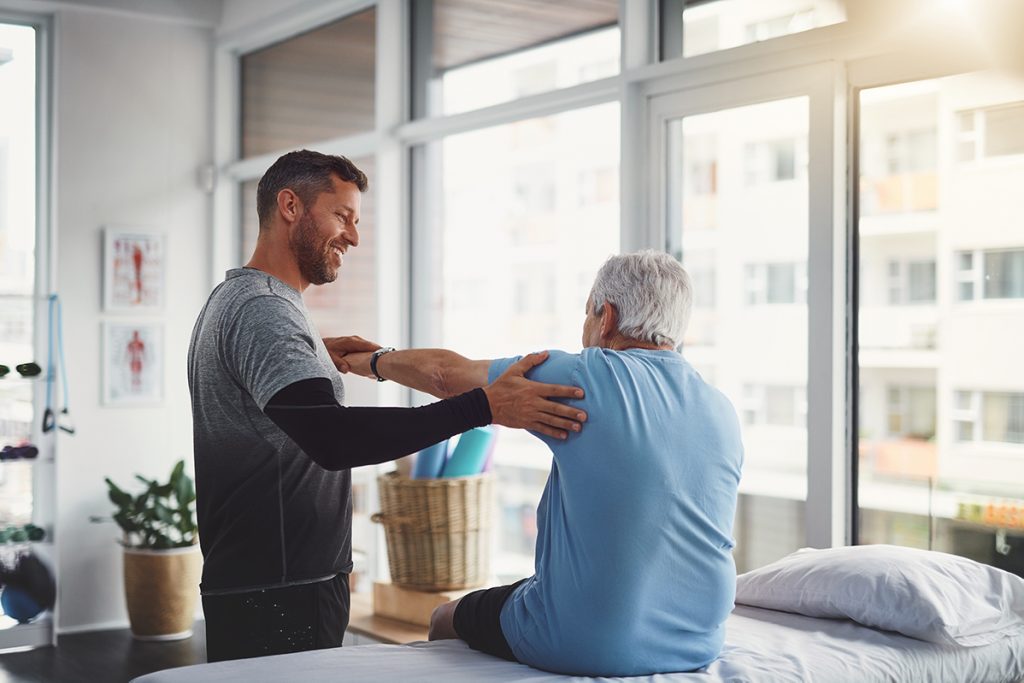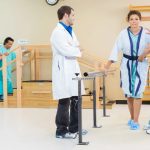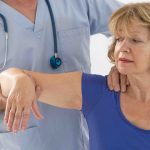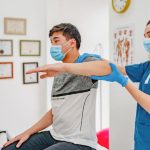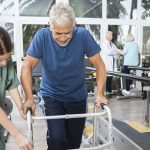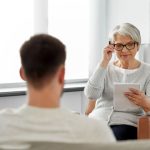Medically reviewed by Huma Sheikh, MD
Scientific research has proven that stroke rehabilitation helps optimize recovery for a better overall outcome.
What Is Stroke Rehabilitation?
Stroke rehabilitation consists of a number of different approaches, such as strengthening exercises, speech and swallow therapy, and training for balance and walking.
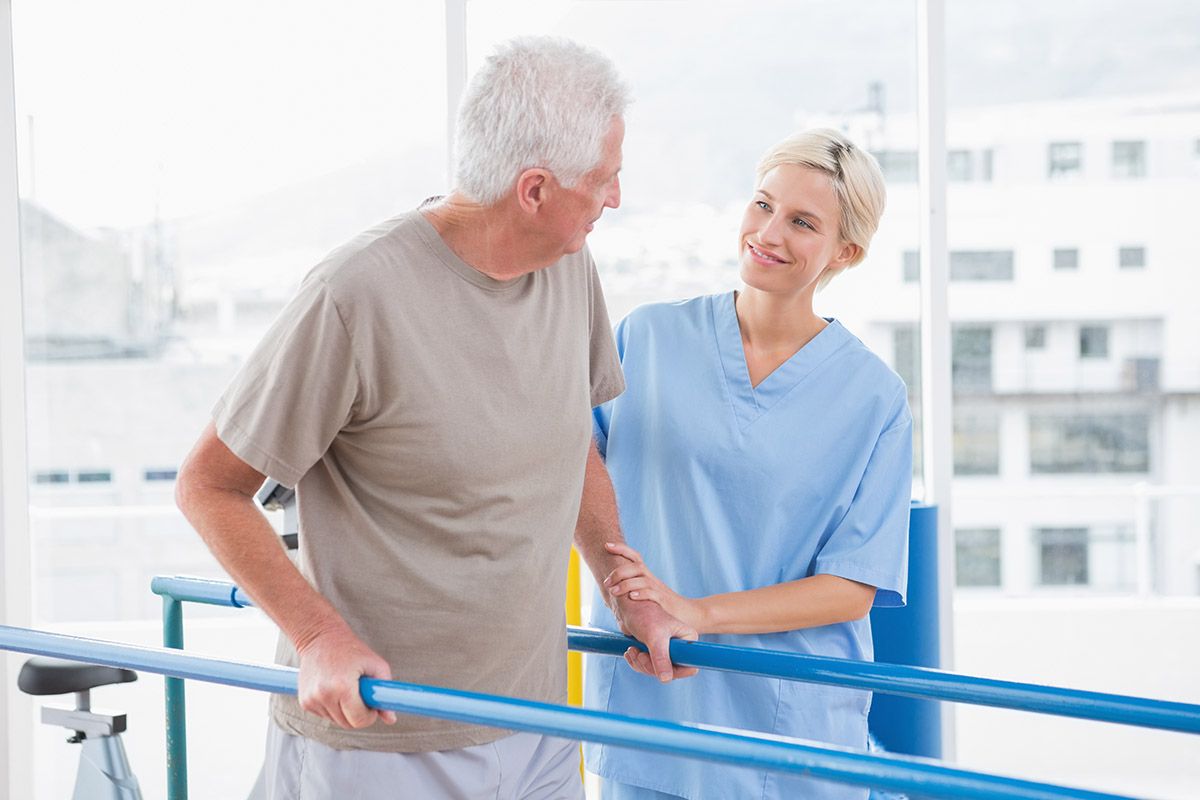
Rehabilitation after a stroke is an individualized process tailored for each stroke survivor. The plan normally consists of programs that are designed with a team of healthcare providers. Each type of specialized therapist provides a different kind of exercise focused on improving particular skills. The rehabilitation program helps a stroke survivor regain as much function as possible after a stroke.
A comprehensive rehabilitation program that begins during or immediately after a stroke survivor leaves the hospital can help to maximize recovery. In most situations, stroke survivors can regain a substantial portion of the functions lost as a result of the stroke.
A set of exercises for rehabilitation of post-stroke patients. Set No1 is aimed at improving the functions associated with mobility in bed.
Post-stroke Recovery: A Team Effort
Joint clinical guidelines from the American Heart Association and the American Stroke Association strongly recommend that stroke survivors receive rehabilitation services from a multidisciplinary team of healthcare providers with training in neurology, rehabilitation nursing, occupational therapy, physical therapy, and speech and language therapy. Other health professionals who play an essential role in the process include social workers, psychologists, psychiatrists, and counselors.1
Why Is Stroke Rehabilitation Important?
After a stroke, most people experience some degree of healing of the brain, which results in improvement of the symptoms. But most people continue to experience some neurological deficits after a stroke.
Often, stroke survivors experience problems with balance that can make it difficult to get around safely. Other issues that interfere with recovery after a stroke include problems such as muscle atrophy (thinning of the muscles) from lack of use and muscle spasticity (stiffness of the muscles due to brain damage) that can make it difficult to move around.
Stroke rehabilitation provides a safe way to regain functions impaired after a stroke through a targeted and organized exercise plan. Many stroke survivors feel safer getting back to physical activity when under the supervision of a therapist. Rehabilitation is also designed to gradually increase the level of difficulty of the exercises with time.
EXERCISES FOR REHABILITATION OF POST-STROKE PATIENTS. SET №2 IS AIMED AT IMPROVING THE MOBILITY AND STABILIZATION OF THE PELVIC COMPLEX
The Goals of Rehabilitation
Some of the goals of rehabilitation include:
- Preventing atrophy of the weakened arms or legs
- Preventing spasticity of the arms or legs
- Training your bladder to avoid urinary retention and incontinence after a stroke
- Learning how to eat and swallow your food and drinks safely after a stroke
- Improving communication with aphasia (difficulties with speech) rehabilitation
A SET OF EXERCISES FOR REHABILITATION OF POST-STROKE PATIENTS. SET №3 IS AIMED AT IMPROVING THE MOBILITY AND FUNCTION OF THE UPPER LIMB, STABILIZING THE SHOULDER GIRDLE
How Long Does Stroke Rehabilitation Last?
The duration of your rehabilitation program depends on the type of stroke you suffered. On average, immediately after leaving the hospital, a stroke survivor may remain at an inpatient rehabilitation facility for a total of 16 days.
Inpatient rehabilitation therapy does not provide the same intensity of medical care as a hospital, but it is an environment in which a stroke survivor gets daily medical attention, help with medications, and an intense physical therapy program. Therapy includes muscle training, balance training, and evaluation of speech and swallowing function. Help with learning how to swallow safely and how to use the toilet after a stroke is part of an inpatient rehabilitation program.
Inpatient rehabilitation is typically followed by further outpatient rehabilitation for several weeks or even several months.
Although most of your improvement will take place within this short time, your brain can continue to learn and re-learn new and old tasks for as long as you live. After you have completed your visits to the rehabilitation center, you may be asked to regularly continue doing the exercises that your physical therapists recommend for you at home, which is often described as your rehabilitation “homework.”
A SET OF EXERCISES FOR REHABILITATION OF POST-STROKE PATIENTS. SET №4 IS AIMED AT IMPROVING THE MOBILITY AND FUNCTION OF THE LOWER LIMB, STABILIZING THE PELVIC GIRDLE
New Stroke Rehabilitation Techniques
There are many new techniques being investigated in stroke rehabilitation, such as mirror therapy, video games, computers and music therapy. A music glove designed for stroke survivors is among the methods that use new technology to improve stroke outcomes.
By Jose Vega MD, PhD
Jose Vega MD, PhD, is a board-certified neurologist and published researcher specializing in stroke.
Summary
Rehabilitation is not easy. It often involves fatigue, discouragement, and even physical discomfort. A successful outcome requires dedication, perseverance, and a positive attitude. In fact, scientific research studies suggest that successful and meaningful recovery is more likely for participants who are dedicated and keep a high level of motivation during the rehabilitation process.2
If your loved one has had a stroke, it is helpful to provide encouragement and positive feedback. It is normal for people to feel exhausted or hopeless when the improvement is slow or when recovery seems to be at a standstill. Yet, even in situations in which improvement seems slow, the overall outcome turns out better in the long term after rehabilitation therapy.

Demo version of GRS workouts for rehabilitation of post-stroke patients on YouTube
You can find more information about Stroke in our Blog.
Our website presents sets of exercises for the rehabilitation of post-stroke patients in the following four areas:
-
A SET OF EXERCISES FOR REHABILITATION OF POST-STROKE PATIENTS. SET №1 IS AIMED AT IMPROVING THE FUNCTIONS ASSOCIATED WITH MOBILITY IN BED
-
EXERCISES FOR REHABILITATION OF POST-STROKE PATIENTS. SET №2 IS AIMED AT IMPROVING THE MOBILITY AND STABILIZATION OF THE PELVIC COMPLEX
-
A SET OF EXERCISES FOR REHABILITATION OF POST-STROKE PATIENTS. SET №3 IS AIMED AT IMPROVING THE MOBILITY AND FUNCTION OF THE UPPER LIMB, STABILIZING THE SHOULDER GIRDLE
-
A SET OF EXERCISES FOR REHABILITATION OF POST-STROKE PATIENTS. SET №4 IS AIMED AT IMPROVING THE MOBILITY AND FUNCTION OF THE LOWER LIMB, STABILIZING THE PELVIC GIRDLE
You may also find useful information and sets of exercises in the section APHASIA AND DYSARTHRIA, where 5 sets of exercises for rehabilitation for speech disorders are currently presented.
Sources
https://www.verywellhealth.com/stroke-rehabilitation-is-critical-for-stroke-recovery-3146246
- Winstein CJ, Stein J, Arena R, et al. Guidelines for adult stroke rehabilitation and recovery: A guideline for healthcare professionals from the American Heart Association/American Stroke Association Stroke. 2016;47(6):e98-e169. doi:10.1161/STR.0000000000000098
- Langhorne P, Baylan S; Early Supported Discharge Trialists. Early supported discharge services for people with acute stroke. Cochrane Database Syst Rev. 2017;7(7):CD000443. doi:10.1002/14651858.CD000443.pub4

